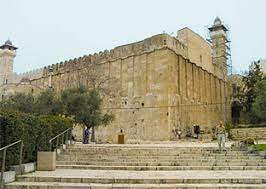
We usually do a lot of hiking on Chol Hamoed. My darling
wife Chana is an avid fitness enthusiast, while I try to play the good husband
and tag along and try to enjoy myself (or at least pretend to enjoy myself) as
much as possible. Well, I guess my acting isn’t as good as I thought, and after
several years of this itinerary, she told me that I needn’t shlep along anymore, and we could find
other activities to enjoy together.
Our son Arky is an incredible tour guide (but if you
read the Where What When you probably
already know that), and although he wasn’t going to be around, he gave us some
great leads on off-the-beaten tour path excursions. One which piqued our
interest was a trip to Yericho (Jericho).
What makes going to Yericho so unusual? Well, without
getting into political discussions, control of Yericho was ceded to the
Palestinian Authority in the Oslo Agreements, meaning that it’s in “Area A,”
under full Palestinian control. Essentially, it’s generally considered to be an
exceptionally bad idea to ignore the
explicit warnings and enter the city (see the big bad red sign).
But G-d bless Erna. I don’t know Erna’s last name,
but she doesn’t need one. She’s unforgettable. Erna is a slight, 70-something
firebrand, and maintaining a Jewish presence in Yericho is her passion. Thanks
to her unwavering determination, tours of Yericho are allowed once a month,
with considerable IDF backup. You can see more at Jewishjericho.org.il.
We began our day by boarding a bulletproof bus near
Sanhedria in Yerushalayim. To our surprise, one of our son’s friends, Nachum,
was on the bus when we got on. Off we went, down in the direction of the Dead
Sea. When we got closer to Yericho, we stopped at Beit Chogla, a micro-yishuv (around 20 families, most living
in trailers). This is the place that Erna calls home, the closest place a Jew
can live to Yericho at this time. There we were met by our army escort –
perhaps 20 soldiers in several armored vehicles, impressively armed.
Our first stop was at the Shalom Al Yisrael
Synagogue, which dates to the sixth century CE. Before we even got out of the
bus, the IDF soldiers spent time sweeping the surrounding area to ensure our
safety. By the way, the soldiers seemed to enjoy this unusual excursion as much
as we did!
The mosaic floor of the shul was comprised of hearts,
divided into green and red halves, representing using both the good and bad
inclinations of the heart to serve Hashem. This is in accordance with the verse
in the Shema about serving Him “b’chol levavcha, with a repeated letter vet. Likewise, there are 32 squares
(representing the intellect) and 32 circles (representing the spirit), which
similarly indicate that we must have a holistic approach in our observance of
the Torah and mitzvos.
In the center of the mosaic are the words “shalom al Yisrael.” The letter yud in the final word is extremely
elongated, and there is a tradition that it is forming an arrow, pointing to
the precise location where Yehoshua (Joshua) stood when the angel instructed
him to remove his shoes.
Above the shul there is actually a yeshiva, which was
active for some time after the Oslo Agreements, until it was burned by Arab
thugs.
From there we traveled to Tel Yericho. A tel is a hill, which is generally formed
by layer upon layer of civilizations past. The highlight of that area for me
was a single excavated remaining home. Erna explained the tradition that this
is the house of Rachav Hazona, who was promised that her family and all that
belonged to them would be spared in the conquest of the city, in repayment for
her hiding Yehoshua’s spies. There, at what is believed to be the site of the
former wall of Yericho, which miraculously sunk into the ground following our
people’s shofar blasts, we made the bracha
of “…she’asa la’avoseinu nisim bamakom
hazeh – He who made miracles occur for our ancestors in this place.” That
was a first-ever experience for me and made me miss Mitzvah Motivator’s
“Brachos-Out-Loud” contest, as it would have been a very special one to check
off!
Our next stop was at the Spring of Elisha. It is so
named because the prophet Elisha miraculously turned the toxic waters into
fresh, pristine waters. They flow to this day, and are the source of beautiful
vegetation and growth for the entire area.
One more destination was the Na’aran Synagogue
outside of Yericho, which was from a slightly later time period. Interestingly,
among the mosaics are forms which were normally associated with idolatry, such
as the sun and moon. Apparently, although they started as foreign images, they
seemed to have taken on a generic religious connotation and were not considered
off limits for use in a shul.
As we dropped Erna back off at her home, we got the
“grand tour” of this simple settlement, with its majestic views and devoted
residents. It was the end of a very special day, memories of which we will
treasure for a long time!






